Where the Wild Things Are
Snowshoeing in the Carpathian mountains on the tracks on the European Wolf spelled total relaxation for Holly Kirkwood
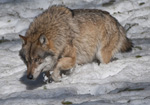

When most people imagine their holiday they picture azure skies, and soft white sand, or effortlessly schussing down a red run in the Alps. As did I, until I tried something completely different. Biosphere Expeditions' wolf, lynx and wildcat project takes place every February in the wilderness of the Carpathian Mountains, where, for a week a group of ten volunteers share a house and learn to track these elusive creatures in the snow. Throughout the experience we were repeatedly told that we were not on holiday at all; no, we were on expedition. And for all the early starts and physical effort, it's the best (non) holiday I've had in years.
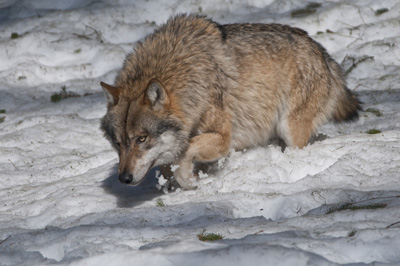
The European wolf canis lupus lupus
With absolutely no idea of what to expect I embarked into the unknown, flying to Bratislava with Ryanair (sadly the only carrier). A shrewd move was arriving a day early and guaranteeing a good night's sleep at the Kemplinski Hotel in Bratislava. With enormous comfortable beds and a chauffeur-driven Rolls Royce on stand-by for guests, it's an oasis of pampering offering remarkable views of the Danube from the swimming pool on the 10th floor.
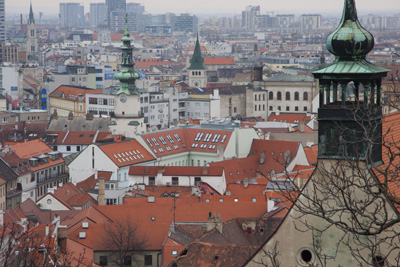
Bratislava
The meeting
Our group convened on a Saturday morning at Bratislava's main train station to meet each other as well as our team leader Adam. Three hours later we alighted, not to put too fine a point on it, in the middle of nowhere, otherwise known as the Veľká Fatra National Park
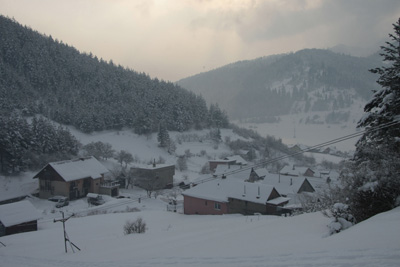
Our village base
Sign up for the Country Life Newsletter
Exquisite houses, the beauty of Nature, and how to get the most from your life, straight to your inbox.
My fellow expeditionaries were an eclectic mix of nationalities and personalties, ranging from a merchant seaman from Norway to two friends working for the UN in Vienna, while Adam is a friendly, highly capable person whose experience belies his age. Our first evening in our comfortable mountain chalet was spent meeting Peter and Tomas, our other team leader and our resident scientist, and absorbing the knowledge we'll need for our ‘holiday' including a safety briefing and animal tracking skills.
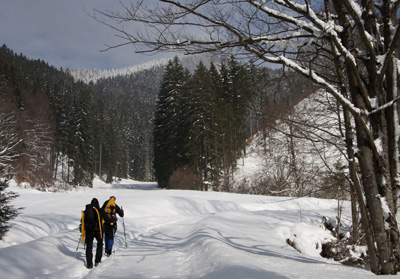
The following morning after familiarising ourselves with the art of snowshoeing (the snow is far too deep for normal boots), GPS and wild animal tracks, we were declared ‘expedition-ready'. The next five days are spent in the wilderness of the forest, snowshoeing and cross-county skiing. Our daily schedule is simple: rise at 6.30am, leave the house at 8am, with packed lunch, map, GPS and thermos in a backpack, and try to cover as much ground as we can until it's nearly dark. As it turned out, the days were exhilarating. The snow-covered forest is totally wild, and the silence is overwhelming.
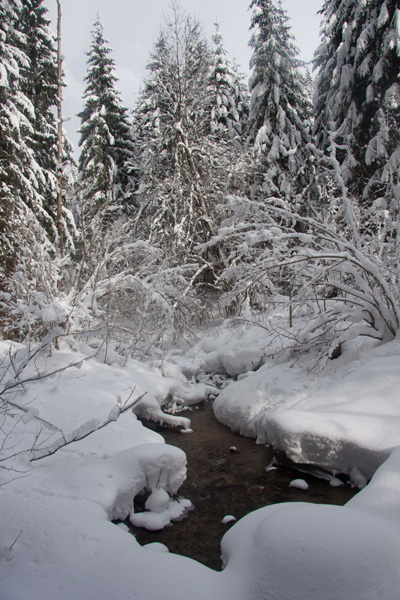
We saw fox, deer, badger, pine martin, wild boar, lynx, wildcat and wolf tracks in the week we were there, plus plenty of scat and urine and a few deer carcasses along the way. The physical exercise - snowshoeing for seven hours a day, the majority of the time climbing uphill - gives you the same glowing feeling as a day's skiing, but there are no lifts, no queues, and no other people at all. It feels like spending a week in a Christmas card.
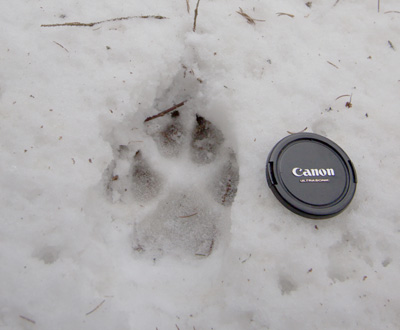
Wolf track
Evenings are spent in the cosy house with its charming owner František, who was the perfect host, chef and chanteur. After a debrief of each day's findings we relaxed over supper and some drinks: there is a bar, but spending more than five euros in an evening is a challenge - eyes soon droop after a full day in the freezing mountains and a hot supper.
Project wolf
Part of a growing trend for volunteering holidays, Biosphere operates wildlife conservation projects all over the world, from the Peruvian rainforest to Africa, Malaysia, and Australia. They work with megafauna including big and small cats, elephants, turtles, whales, sharks, wolves and marsupials to name just a few.
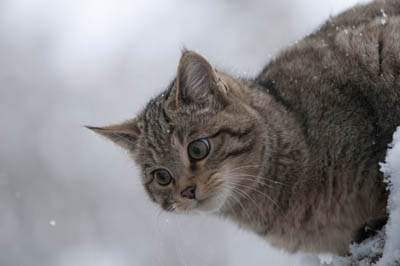
Wildcats look quite like our domestic cats, but much smaller
The reason for our trip wasn't to try to find wolves and lynx (although last year's crew ran into a family of bears). Instead, using traditional tracking methods, motion-capture cameras and modern DNA sampling we were helping to build a body of evidence crucial to the future of the animals in their natural habitat - the Slovakia project is now in its fourth year.
A good holiday is meant to be a break from your daily life and routines, and unfortunately we're all so well connected now it's difficult to get away from emails and social media. Most of our group found that focusing on the tasks at hand on this trip allowed them to completely detach, and therefore properly relax. Our team returned to civilisation a week after we'd left, deposited onto the platform in Bratislava, lungs full of mountain air and fully refreshed. Wilderness across the world
Other projects run by Biosphere include a daring expedition to the Altai in central Asia. Situated between China, Mongolia, Kazakhstan, Russia and the Tuva Republic this is one of the most remote parts of the world, and the land of the snow leopard. Work done by previous Biosphere expeditions over the past decade has already helped to convince local authorities to extend the range of the protection zone afforded to the leopards in this wild region, but there is lots more to be done, both to educate locals not to set snares for the cats, and to encourage the authorities to better enforce the area's boundaries. The team hope to be able to go back to Altai as soon as they can and it's knows as one of their most challenging, but rewarding expeditions.
One of the most popular projects is the trip to Namibia, to work with elephant, leopard and cheetah, but Biosphere also has some fascinating water-based expeditions. For those who dive, this is an unrivalled chance to spend a week immersing yourself in an underwater world: expeditions range from studying whales, dolphins and turtles around the Azores to documenting the behaviour of the reefs, sharks, dolphins and turtles in Malaysia or the Maldives.
Pick your holiday carefully
Biosphere Expeditions is one of the most respected organisations running volunteering holidays - they have 14 years experience in the field, as it were, and work with many other NGOs, such as the WWF, towards common goals in the conservancy landscape. The popularity of volunteering may be growing but as the sector expanded, so did the number of companies trying to earn a quick profit so if you're interested in taking part you absolutely must check the credentials of the outfit. You can check the Biosphere website's FAQs for more information at www.biosphere-expeditions.org.
** Images by Mirko Macinai, apart from wildcat image, which is copyright Tomas Hulik
-
 'Monolithic, multi-layered and quite, quite magnificent. This was love at first bite': Tom Parker Bowles on his lifelong love affair with lasagne
'Monolithic, multi-layered and quite, quite magnificent. This was love at first bite': Tom Parker Bowles on his lifelong love affair with lasagneAn upwardly mobile spaghetti Bolognese, lasagne al forno, with oozing béchamel and layered meaty magnificence, is a bona fide comfort classic, declares Tom Parker Bowles.
By Tom Parker Bowles
-
 Country houses, cream teas and Baywatch: Country Life Quiz of the Day, April 24, 2025
Country houses, cream teas and Baywatch: Country Life Quiz of the Day, April 24, 2025Thursday's Quiz of the Day asks exactly how popular Baywatch became.
By Toby Keel